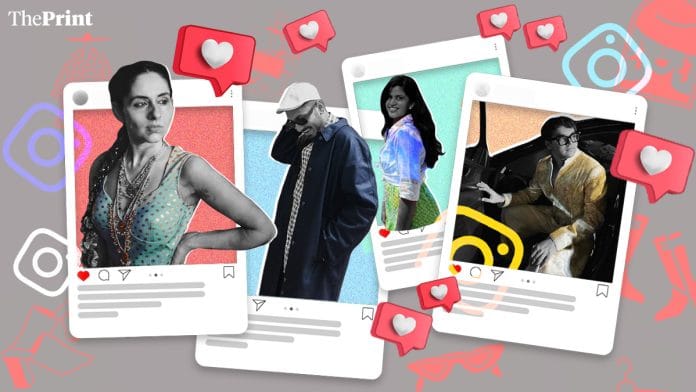A frequently asked question today goes something like this: Is being an influencer a real job?
How you reply is likely to reveal your age and your coolness quotient.
In today’s Instagram era, people regardless of their age, look to influencers for advice on everything—from makeup recommendations and movie reviews to money management tips. Being an influencer is more than just a passing trend or a casual pastime; it is a legitimate profession that demands specific skills and attributes. While it may seem like the grass is greener on the influencer side, we shouldn’t label it as easy just because it looks glitzy. It’s high time we peer beyond the sparkle and appreciate how influencers have disrupted the business of marketing and advertising agencies.
They play a crucial role in shaping trends, opinions, and consumer behaviours. Their reach and impact are so significant that even political figures, such as Prime Minister Narendra Modi, have recognised the value of influencer marketing—the National Creators Award is proof. This growing influence underlines the fact that being an influencer is not just about minting money by posting photos or videos online; it requires 4 Cs: creativity, confidence, consistency, and a willingness to face criticism.
Being an influencer is also a strategy of survival for some. In Afghanistan, the Taliban’s restrictions have led women to become YouTube influencers posting about food, fashion, makeup and family tales.
But you don’t have to go that far to see how influencers can use their platform and their popularity to make a real impact. Meet Abhi and Niyu, the content creator couple making waves with their political and environmental videos. Not only did they raise awareness about the 2020 Northeast floods on YouTube, but they also donated money and helped NGOs gather funds for relief efforts.
Also read: There’s too much Akshay Kumar on screen. Take a break and come back with a Hera Pheri
Staying fresh
In a world where content is king, influencers are constantly looking to whip up fresh, exciting material that connects with their audience. This means coming up with out-of-the-box ideas, trying new formats to stand out, and always keeping up with the latest trends. Whether it’s eye-catching photos, captivating stories, or entertaining videos, creativity is the fuel that powers an influencer’s ability to hold their audience’s attention.
Diving into your creative bank every other day sounds easy, but it’s not all sunshine and rainbows. Your mind isn’t an endless vault of novelty. It’s draining, can fry your brain, and sometimes feels like you’re banging your head against a wall. Hey, even the great Picasso hit a creative slump now and then.
Confidence is another essential ingredient. Putting yourself out there for the world to see is a bold move. You need a certain sense of self-assuredness to share opinions, personal stories, and your life, especially knowing you will most definitely face backlash. Criticism is part of the job, and the internet can be a ruthless place. Everything, from an influencer’s appearance, their content and their personal lives, gets criticised. With people crossing the line with harsh language and even threats. Handling this with grace and resilience is the key to survival. But you can’t complain because you signed up for this gig.
Despite the constant criticism, influencers must consistently show up every day, and with fresh content, because consistency is crucial to keeping followers engaged. Being your own boss doesn’t mean discipline can take a back seat. Slacking off can hurt your reach and fan base. Influencers must balance their work with personal lives, often blurring the lines between the two to ensure they remain visible and relevant in an ever-changing digital landscape.
Doesn’t sound too glamorous now, does it?
Also read: Haryanvi IPL commentary is more crass than cricket. Don’t waste the opportunity
Disrupting traditional marketing
The rise of influencers has also led to a boom in influencer marketing, shaking up how brands connect with their audiences. Think of it like a democratic, capitalist utopia where you must keep your audience engaged or risk losing them—and your paycheck. Influencers are motivated to dish out quality content their followers crave, which means sticking with brands that match their vibe and can be seamlessly woven into their work. This system is pretty good at policing itself.
Companies benefit more from these collaborations because, with zero effort, they get to tap into niche audiences and drive engagement in ways old-school advertising can’t keep up with. Influencers shape consumer opinions and steer buying choices, making them powerful assets for businesses aiming to broaden their horizons.
Even politicians have embraced the power of influencer marketing. BJP leader and road transport and highways minister Nitin Gadkari recently dined on Chinese food with food-and-travel influencer Kamiya Jani aka Curly Tales. They spoke about his favourite meals and vacation spots, while he promoted his work on infrastructure. An interview of foreign minister S Jaishankar by YouTuber and podcaster Ranveer Allahbadia aka BeerBiceps has racked up 8.7 million views since it was published in June.
By connecting with influencers, political leaders can appeal to younger generations and spread their message more effectively. This strategy shift highlights the growing importance of influencer marketing across different industries and fields. It’s definitely the next big thing. Who knows? Influencers might even run for office one day. But that’s a conversation for another day.
The truth is that we’re in an era where freelancing and self-employment are the norm. Harvard Business Review this month even said the future of the workforce is freelance. More and more people want to avoid going to 9-to-5 jobs. There’s also a growing distrust of big corporations and a desire to learn and DIY, making the internet the go-to platform for all things life. Like it or not, influencers are becoming respected voices, on par with experts in their fields.
Views are personal.
(Edited by Theres Sudeep)






